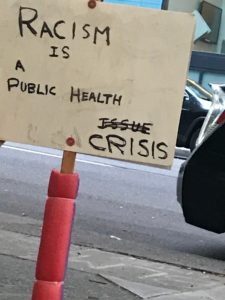How to Engage with Content & Colleagues at a Virtual Meeting (And Like It!)

Now that AHA20 is going virtual, you might have some questions: Is it worth it? How can I connect with my council? Will the valuable networking still happen? Will I actually learn anything? So many of our regular touchstones have been canceled in 2020, but you don’t have to give up Scientific Sessions. It won’t be the same, but with a little planning, it will be great in different ways.
I polled the AHA early career bloggers for their best virtual meeting tips, and here’s their rundown on how to make virtual meetings work for you:
- Use multiple channels. While the meeting may be streaming on a designated platform, you might also find engagement using outside tools or social media platforms.
- Follow the official hashtag (#AHA20) on twitter. This is a great way to highlight key presentations, engage with other participants, and connect with experts and presenters. (If you haven’t used twitter professionally before, take the time to set up your bio, make sure your existing content is safe for work, and make your avatar a good picture of you. Or consider a dedicated profile for work. Do some legwork ahead of time to follow people and organizations you’re interested in connecting with during the conference).
- You could create a Slack Channel with others in your institution or research area to share resources and have ongoing conversations.
- You could make a Strava group to engage in a little healthy competition and give one another kudos— who got their workout in today?
- Take breaks. At a face-to-face event, you spend time walking between sessions and break for meals. When everything is online, it’s easy to forget to get up, rest your eyes, and move around. Hydrate. Take bio breaks. Bonus points if you go outside and don’t take your phone.
- Consider using a standing desk, or even a makeshift setup, to help you be more mobile throughout the day. Changing position frequently is one of the keys to avoiding pain from being sedentary.
- Take notes! Things start to run together and a good note-taking strategy will help you remember key information. Maybe you use a good, old-fashioned paper notebook, or maybe you prefer a tool like Evernote. Up to you.
- Use the interactive tools to ask questions. Especially if you haven’t gotten up the gumption to stand up and ask questions at a live session, you might find the online format more accessible.
- Connect with colleagues before the meeting starts, and schedule times to debrief and share key takeaways. This helps to keep momentum and excitement going.
- Constant on-screen interaction can be very taxing. If available, try the on-demand option to give yourself more flexibility. Also consider taking a break from being on camera and just listen.
- Let yourself be immersed. When you travel to a meeting or conference, you may arrange child care, get someone to cover your clinical or teaching duties, and put up your out-of-office message. While it might be tempting to squeeze conference sessions around your regular responsibilities, you’ll miss the value that the immersion experience provides.
And remember, the virtual conference is accessible to all– if you might ordinarily be limited by difficulty traveling or cost, this is could be your year.
Share other tips (@AHAmeetings and #AHAEarlyCareerBlogger on twitter), connect with the Early Career Community, and grow your network!
And register for sessions: https://professional.heart.org/en/meetings/scientific-sessions



